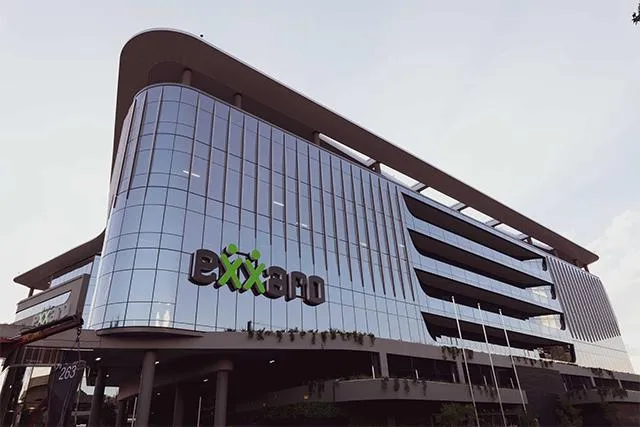Exxaro Resources faces challenges from rail disruptions and coal demand decline
MINING

Exxaro has forecast further declines in the international coal price for the second half of its financial year to December 31, 2025, due to global trade tensions, higher Indian coal production, higher gas and nuclear power output in Japan, Korea, and Taiwan, and sluggish Chinese offtake.
Image: Supplied
Exxaro Resources' immediate challenges includes South Africa’s rail infrastructure, a decrease in coal demand from Eskom as well as the uncertainty created by the impending expiry of a 90-day import tariff reprieve granted by the US.
Trade regulatory uncertainty has moderated since April, positively impacting financial and commodity markets. Equity indices, crude oil prices, and the US dollar rebounded, said Riaan Koppeschaar, CFO of the coal, iron ore mining, and renewable energy group, in a pre-close statement released on Monday.
However. the 90-day reprieve on increased US import tariffs on South African goods is set to expire on July 9, 2025. During this period, South African exports to the US are subject to a 10% tariff instead of the previously announced 30%.
Koppeschaar noted that while South Africa's real GDP began the year slowly, with a 0.1% quarter-on-quarter expansion, there is optimism that economic activity will improve in 2025, despite the uncertain trade outlook.
Transnet Freight Rail (TFR) continues to experience disruptions, including cable theft, power failures, locomotive and wagon shortages, and deteriorating infrastructure. A rail wash-away in the first half of the year affected Grootegeluk, while a derailment further impacted throughput.
“Despite these challenges, the Richards Bay Coal Terminal volumes improved to 54.45 million tons per annum (Mtpa) for 2024, up from 52 Mtpa. Rail execution remains volatile but has shown improvement, particularly in the Mpumalanga region,” the group stated.
Eskom sales by Exxaro are expected to decrease by 15%, in line with Eskom's maintenance schedules. Koppeschaar indicated that for the six months ending June 30, the average benchmark API4 Richards Bay Coal Terminal (RBCT) export price is expected to average $91 per ton, compared to $110 per ton for the second half of 2024.
Iron ore fines prices are projected to average $100 per dry metric ton, slightly down from $101 per dry metric ton in the second half of the previous year.
Exxaro’s total coal product and sales volumes are forecast to decline by 6%ay. and 7% in the first half, respectively, primarily due to reduced demand from Eskom. Coal capital expenditure is expected to be 19% lower, in line with capital replacement plans at Grootegeluk and Belfast.
Cennergi's wind assets are forecast to generate 335 GWh of electricity by June 30, 2025, down from 339 GWh at the end of the first half in 2024, and 386 GWh in the six months to the end of 2024. Construction of the 68 MW Lephalale Solar PV Project at Grootegeluk is underway.
As of May 31, the group held R19.5bn in cash, excluding R5.8bn in debt in the energy business. On May 13, Exxaro announced the acquisition of manganese assets from Ntsimbintle Holdings and OMH (Mauritius) Corporation, for between R9bn and R14.64bn. The transaction is expected to close in early 2026.
Thermal coal production is anticipated to decline by 4%, in line with Eskom's reduced demand at Grootegeluk. Metallurgical coal production is forecast to fall 24% due to above-normal rainfall and associated logistical disruptions. Tied mine production at Matla is expected to increase 18% mainly due to the early ramp-up of Mine 1.
Seaborne thermal coal prices are under pressure due to weak demand, exacerbated by lower natural gas prices, ongoing Russia-Ukraine peace negotiations, and broader concerns over new tariffs. By the end of the first half, the spot API4 price traded at around $90 per ton.
In the iron ore market, prices are being weighed down by tariffs on China's steel exports to the US, discussions on China's 2025 steel production limits, and broader US-China trade tensions. On the weaker coal markets, the group noted that Indian domestic steel producers are facing competition from cheaper imported steel, dampening demand for South African coal.
Meanwhile, Indian coal production has increased, largely supporting the power generation sector. Higher gas and nuclear power output in Japan, Korea, and Taiwan further reduced coal demand. This decline caused Australian prices to fall to a four-year low of $90 per ton, further aggravated by sluggish Chinese offtake.
The API4 index fell below US$90 per ton in the first half of 2025—a level not seen since the early days of the Russia-Ukraine war. Domestic thermal coal sales are expected to increase by 23%, driven by the redirection of export volumes to the local market and higher demand for other thermal coal products, mainly at Belfast and Leeuwpan.
Metallurgical coal sales are forecast to decline by 26% due to rail disruptions in the first half, caused by severe rainfall. Export volumes are expected to decrease by 10% due to rail disruptions caused by severe rainfall and a derailment in the first half.
Visit: www.businessreport.co.za